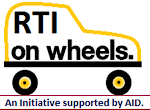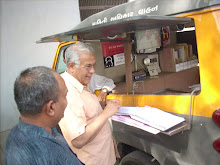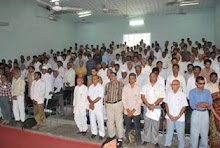Moneylife: National: Saturday,
15 August 2020.
After
the verdict in November 2017, where the Supreme Court (SC) ordered that the
Office of the Chief Justice is a public authority under the Right to
Information Act (RTI), the apex court has so far rejected 13,394 requests and
appeals but has given reasons for the rejections only 9,293 times. This implies
that it has rejected 4,101 such requests, which equal to 30.6% times, without
giving any reason for rejection. The court cited the vague category of ‘Others’
as the reason for 6,410 of the rejections, which means 69% of the times.
Clearly, the reason for rejection did not fall into the exemption clauses of
the RTI Act.
It may
be noted that Section 8 of the RTI Act specifies rejections pertaining to
national interest, privacy and confidentiality.
The
analysis, conducted by the Supreme Court Observer, which chronicles and details
important issues and cases pertaining to the court, on its website
https://www.scobserver.in/ observes that
although the ``(the) judgment cemented that citizens can file right to
information (RTI) requests for records held by the Chief Justice’s office, it
also emphasised that certain types of information are exempted from requests,
such as personal information… but it also recognises that this cannot come at
the cost of hampering the operation of these authorities.’’
So, is
the public information officer (PIO) taking the benefit of the doubt because
the jury had a different set of opinions in the SC order? The analysis implies
so, when it states: “Whether this
reason-giving exercise requires PIOs to explicitly reference specific
provisions of the RTI Act is an open question. On the one hand, Justice DY
Chandrachud, in his concurring opinion, said that PIOs should ‘record detailed
reasons’, to prevent them from arbitrarily rejecting requests. On the other,
the majority opinion by Justice Sanjiv Khanna and others does not dwell on how
much or how little PIOs should record…Hence, the Supreme Court’s PIO enjoys the
authority under the Act to reject RTI requests.’’
Like any
other public authority under RTI, the Court too prepares quarterly reports. The
study says that it is just a mechanical exercise and writes: “For the sake of
transparency, the PIO produces quarterly reports to document how many RTI
requests they are rejecting and on what grounds…The Court's November 2019
judgment was primarily occupied with the information exemptions under Sections
8(1)(e), 8(1)(j) and 11(1). These pertain to information held in a fiduciary
capacity, personal information and third-party information.”
The
‘other’ provisions cited for rejecting information were unclear, say the
findings. The report states: ``We surveyed
all the reports published so far, beginning in the fiscal year 2006-07 and
ending in the third quarter of the 2019-20 fiscal year, and found that the PIO
had primarily cited ‘other’ provisions in rejecting requests. It cited ‘other’
a total of 6,410 times. In other words, 69% of all provisions cited fell in the
‘other’ category. Presumably, the ‘other’ category signifies other provisions
in the Act itself. However, it is unclear which provisions the PIO may have
referred to, as the primary exemptions in the Act are found in Sections 8, 9,
11 and 24. This leaves us somewhat in the dark about why requests are being
rejected.’’
The
graph shows that many of the key provisions that allow for exemptions under the
Act have rarely or never been invoked. Sections 8(1)(a), (c), (d), (h), (i) and
11 have each been used fewer than 10 times since 2006. Further, Sections
8(1)(f), 9 and 24 have not been invoked a single time. Given the wide range of
matters that the Supreme Court deals with, it is perhaps somewhat unexpected
that some of these provisions, such as those pertaining to sovereignty and
national security under Section 8(1)(a), have been so rarely invoked.
In a
similar study done by the Commonwealth Human Rights Initiative (CHRI), its
research scholar and programme co-coordinator, Venkatesh Nayak states that even
in other public authorities, particularly the Prime Minister’s office (PMO),
“according to the CIC, the highest proportion of RTI applications was rejected
not under the permissible exemptions under the RTI Act such as Sections 8, 9,
11 or 24 but under the mysterious category of "others". At 43%
rejections recorded under this category, more than four out of every ten RTI
applications rejected were for reasons other than those permitted by the RTI
Act. The Prime Minister's Office is one of the public authorities (PAs) that
employed this device very frequently.’’















































































